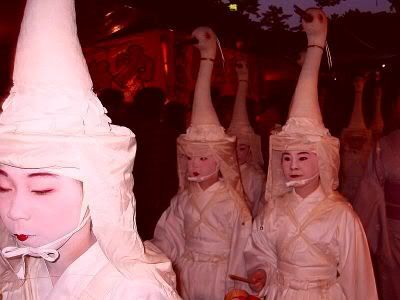
Gion Festival dates back to 869 (early Heian Period). At that time, a virulent epidemic was decimating the people of Kyoto and in order to appease the god of Yasaka Shrine (then called Gion Shrine) prayers were offered and 'hoko' (decorated float) were presented to the god.
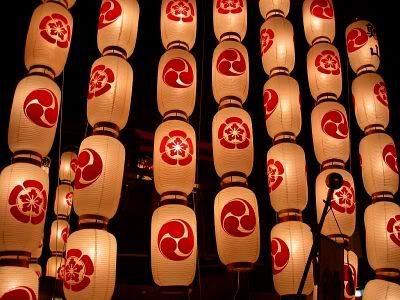
Prior to the parade of floats, lanterns light up these floats for the enjoyment of passerby.
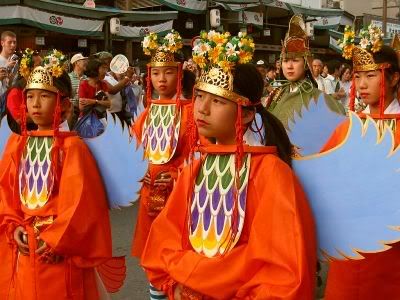
On July 16th, the eve (yoiyama) of the Gion Festival brings over 300,000 people into the night streets.

The air of festivity is further heightened by the play of music, whose rhythm, 'kon-chiki-chin', is known nationwide.
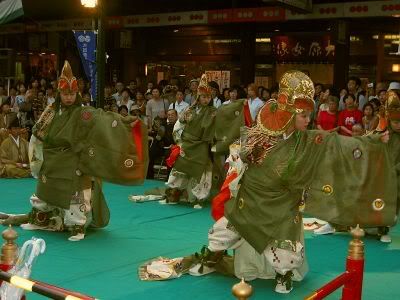
I don't remember the significance of this dance but during the Gion Festival, the Heron Dance is a traditional performing dance, which has been handed down for about 450 years (top most).
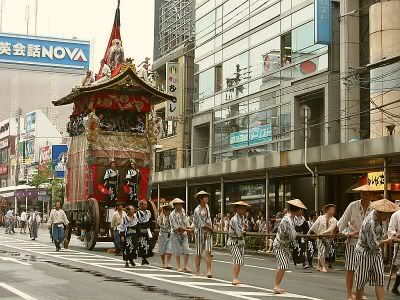
The pulling of the 'hoko' floats through the streets of Kyoto on the following day is the highlight of the festival. As many as 32 huge decorative floats slowly paraded through the streets. During the Muromachi period (1333 - 1568), Japan was wrecked by civil unrest. The government ordered all large gatherings, especially festivals, stopped. Imperial festivals did end for a period of time, but the common people disregarded the government's rescript and continued to celebrate the Gion festival.
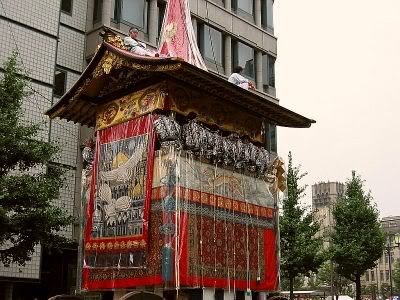
The route of the parade is along Shijo-dori, Kawaramachi-dori, Oike-dori, and Shinmachi-dori.
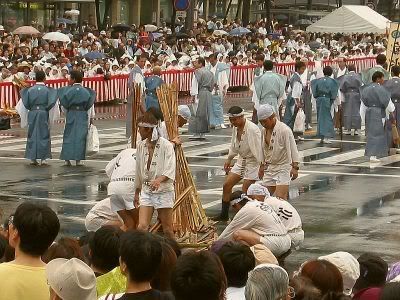
At each corner, excitement heightens as the huge, 12-ton 'hoko' are pulled and pushed over green bamboos which have been split and watered down to enable the float to maneuver the corners.
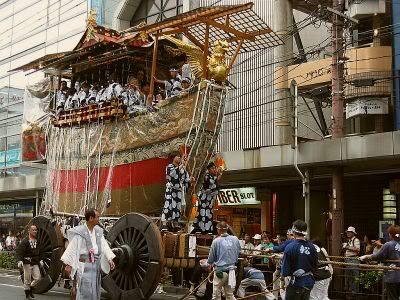
The names of the 'hoko' are drawn to decide the order in which the floats should be placed for the parade. Above is the 'funa boko' (literally fune means boat). The head of the boat is crowned by Geki, a legendary phoenix bird.
Festival goers dress in yukata (light summer kimonos) and geta (high wooden shoes). During the month of July, the ancient capital city of Kyoto seems to travel back in time.

No comments:
Post a Comment